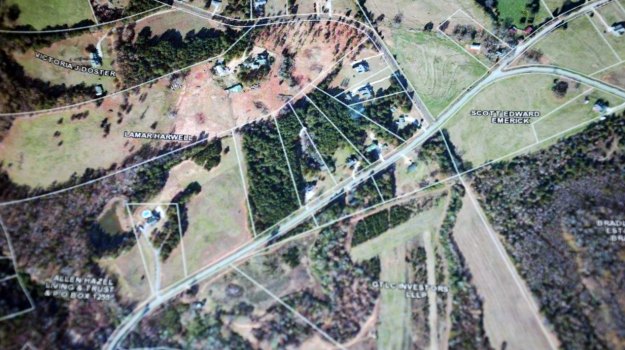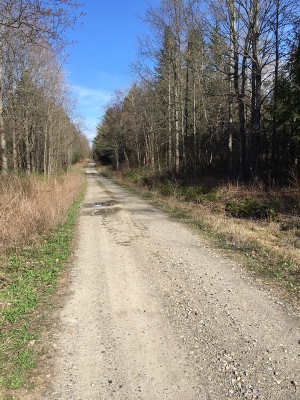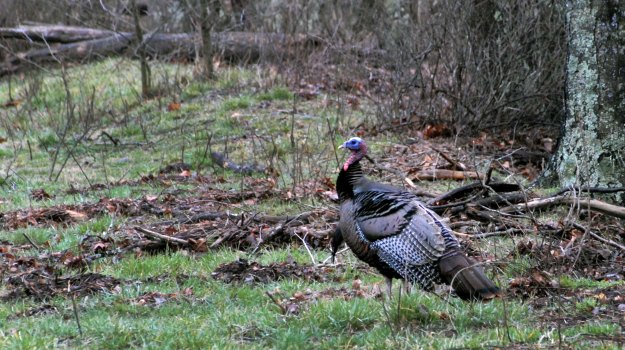
Close to our house there’s a little field right beside a veterinarian clinic. On top of a hill beside the small field and the vet clinic is a piece of state land. The veterinarian owns that field that’s about the only access to the state property. Once you clear the field, you can walk up a little hollow to get on top of the 60-70-acre ridge owned by the state. I'm pretty certain that no one else besides me hunts that state land, because it’s so small.
I can pull this property up on Google maps and see where the boundary line is between the state land and the private land, and a lot of this land is not posted as state land. I found this piece of state land using Trimble Outdoors maps that gives you options of showing specific areas of land. You can see roads, private lands and state lands. This tool is a productive way to locate small parts of state lands that may be overlooked by other hunters. I think the app only costs about $9, but it’s an excellent tool to find state land that you can hunt turkeys on that may be overlooked by other hunters.
One reason I like to hunt this little 60-acre plot is because it’s landlocked. The only way to get to the state land is to get one of the landowners whose property adjoins the state land to give you written permission to cross his or her land to get on the state land. I like to find pieces of property like the one I've described - maybe 50 or 100 acres of state land that’s landlocked by private property - to hunt turkeys. I've probably got a sweet spot that no one else is hunting, because most people won’t go to the trouble of meeting the landowner and asking for permission to cross his or her land to get to the state land. They may thing, “Well, after all, it’s only 60 acres.” You may be surprised at how many people will give you permission to cross their lands to hunt on state land. Within a 5-minute drive of my home, there are several small parcels of state land that an individual can hunt.
 Another secret to hunting this land is that the state maintains the roads to state land during the spring and summer months. But when we get heavy snows in the winter, they usually don’t send a snow plow in to plow the roads. If you go there in the spring, these roads usually will have big pot holes and mud puddles, and most people won’t take their vehicles down them to get to the state land. I've taken several nice birds on these little honey hole state land properties. When I'm hunting these types of lands, I like to scout them the afternoon before I plan to hunt them. I like to try to hear a turkey gobble from the roost or fly up to the roost. Many people won’t put in the time and effort to find birds before they try to hunt them.
Another secret to hunting this land is that the state maintains the roads to state land during the spring and summer months. But when we get heavy snows in the winter, they usually don’t send a snow plow in to plow the roads. If you go there in the spring, these roads usually will have big pot holes and mud puddles, and most people won’t take their vehicles down them to get to the state land. I've taken several nice birds on these little honey hole state land properties. When I'm hunting these types of lands, I like to scout them the afternoon before I plan to hunt them. I like to try to hear a turkey gobble from the roost or fly up to the roost. Many people won’t put in the time and effort to find birds before they try to hunt them.
I think another key to hunting public land gobblers in New York is to spend the time to roost the bird before you hunt him. I've found that many public land hunters will take flashlights and go into the woods the morning they’re hunting - not knowing where a turkey may gobble. Often, these hunters aren’t quiet, and they have no earthly idea where a turkey will be when it’s time for the turkeys to gobble. Even though most hunters may use their GPS on their cell phone or in their car when they're looking for an address or trying to find a store or a residence, they never think to use a GPS to mark a spot where they’ve heard a turkey gobble. I use my GPS to mark the spot where I park my car. I listen for a turkey to gobble or fly up to roost. Then I go in and get as close as I think I can to the roost tree before dark. I mark a spot as a waypoint where I want to take a stand the next morning.Then I follow my GPS back to the truck. The next morning when I'm ready to hunt, all I have to do is park my truck in the same place I’ve parked it the evening before, follow my GPS to the spot I've marked as the spot where I want to take a stand and wait for daylight and for my turkey to gobble. I have a very simple system of finding and taking turkeys, but it’s a system that very few other public land hunters use.



























